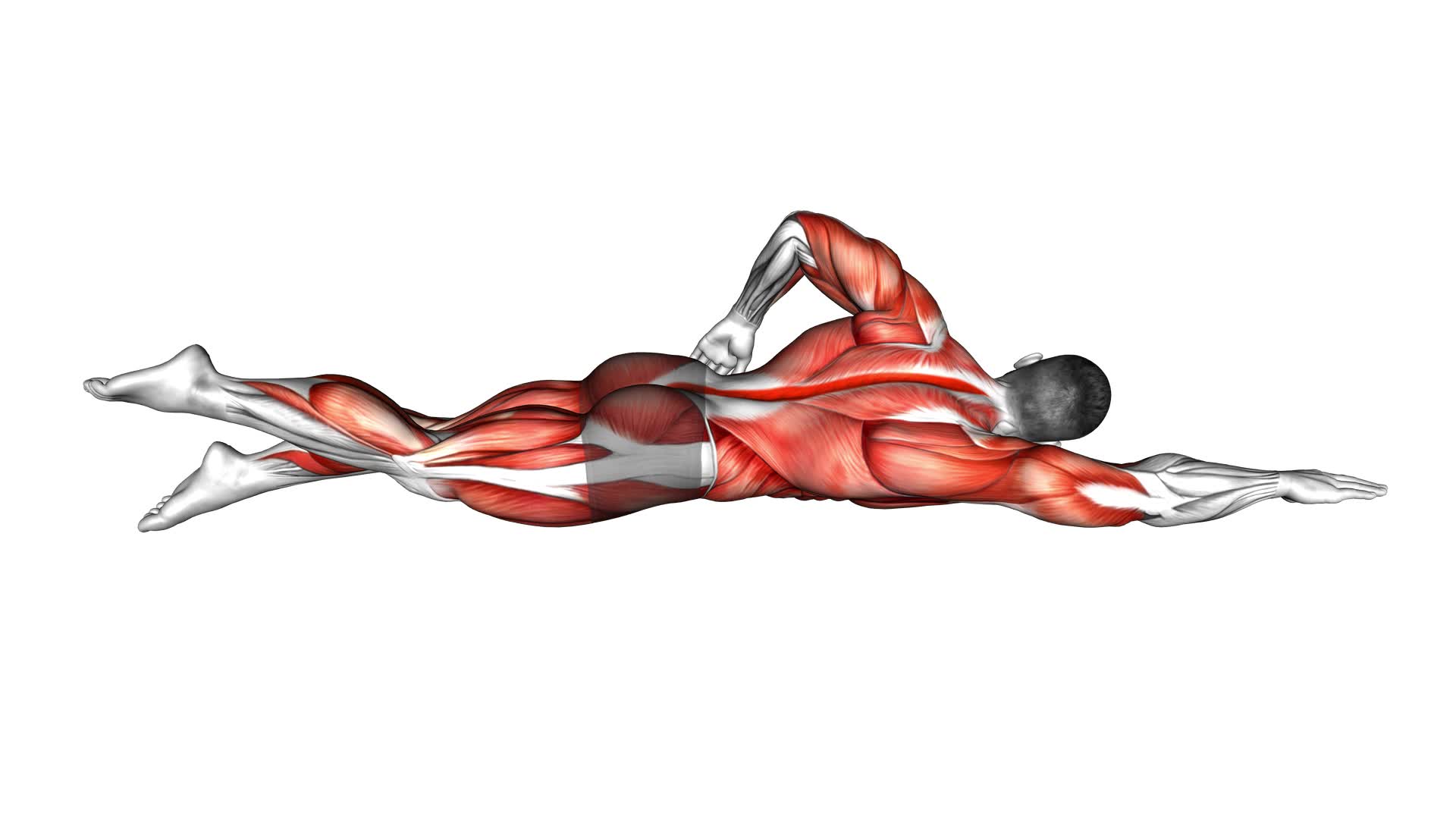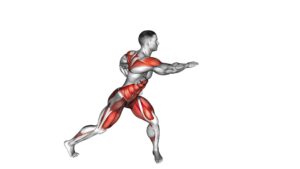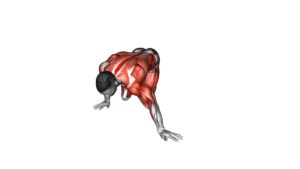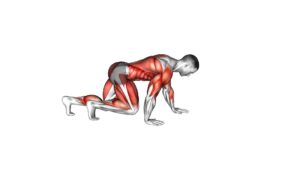Swimming Crawl Style (male) – Video Exercise Guide & Tips

Looking to improve your crawl style swimming technique? This video exercise guide and tips are here to help!
Watch This Exercise Video
Learn about proper body position, arm stroke technique, kicking technique, breathing techniques, and more. Whether you're a beginner or looking to enhance your speed and endurance, this guide has got you covered.
Watch the video, follow the tips, and dive into better swimming form. Get ready to make a splash in the pool with your improved crawl style!
Key Takeaways
- Proper body position and alignment are important for power and efficiency in crawl style swimming.
- Smooth and efficient arm stroke technique and timing enhance performance.
- A powerful kick with proper kicking technique is crucial for maximum propulsion.
- Efficient breathing techniques improve endurance and overall swimming experience.
Proper Body Position and Alignment
To achieve proper body position and alignment in the crawl style swim, you need to focus on maintaining a streamlined posture throughout your stroke. This involves two key aspects: body rotation and head position.
Body rotation is essential for generating power and efficiency in your crawl stroke. As you reach forward with one arm, your body should rotate slightly to the opposite side. This rotation helps to engage the muscles in your core, allowing for a stronger and more effective pull. It also helps to reduce drag and keep your body in alignment.
In terms of head position, it's important to keep your head in line with your body. Avoid lifting your head too high or tucking it too low, as this can disrupt your body's alignment. Instead, aim to keep your head in a neutral position, looking straight down at the bottom of the pool. This will help to keep your body flat and streamline, reducing resistance in the water.
Arm Stroke Technique and Timing
Mastering the arm stroke technique and timing is crucial for achieving optimal performance in the crawl style swim. To improve your arm stroke rhythm and avoid common mistakes in arm technique, keep the following tips in mind:
- Entry: As your hand enters the water, imagine slicing through it like a knife, fingertips first. This ensures a smooth and efficient entry, reducing drag and allowing for a powerful pull.
- Catch: Once your hand is in the water, immediately engage your forearm and begin the catch. This involves bending your elbow and pressing your forearm backward, creating a strong paddle-like surface to propel you forward.
- Pull and Recovery: As you pull your forearm back, focus on generating power from your shoulders and core. Imagine pulling a rope or pushing water behind you. Once your hand reaches your hip, start the recovery phase by lifting your elbow out of the water and swinging your arm forward.
Kicking Technique for Maximum Propulsion
Improve your swimming crawl style by mastering the kicking technique for maximum propulsion. Your kick plays a crucial role in generating power and propelling you through the water efficiently. To enhance your kicking technique, consider incorporating specific kicking drills into your training routine. These drills will help you develop the necessary strength and coordination to achieve maximum propulsion.
One important aspect of a powerful kick is ankle flexibility. Your ankles should be flexible enough to allow for a full range of motion during the kicking motion. To improve ankle flexibility, perform exercises that target this area, such as ankle stretches and flexion exercises. Additionally, using fins during your training sessions can help enhance ankle flexibility and strengthen your leg muscles.
When executing the kick, focus on maintaining a steady rhythm and generating force from your hips and core. Your legs should work together in a fluttering motion, with your toes pointed and your knees slightly bent. Avoid excessive knee bending or kicking too wide, as this can create drag and reduce your overall propulsion.
Breathing Techniques for Efficient Swimming
Use the proper breathing technique to maximize your efficiency while swimming crawl style. Proper breathing is crucial for maintaining a steady rhythm and ensuring a smooth swimming experience. Here are three key breathing techniques that can help improve your efficiency in the water:
- Bilateral Breathing: This technique involves breathing on both sides alternately. By regularly switching the side you breathe on, you can balance the strain on your neck and prevent muscle imbalances. It also allows you to take in more oxygen, increasing your endurance and reducing fatigue.
- Exhalation Underwater: Instead of exhaling while your face is out of the water, try exhaling while your face is submerged. This technique ensures that you have a longer time to inhale when your face is out of the water, allowing for a more efficient exchange of air. It also helps you stay relaxed and maintain a streamlined body position.
- Incorporate Breathing Exercises: Practicing specific breathing exercises outside of the pool can significantly improve your lung capacity and breath control. Techniques such as diaphragmatic breathing and breath-holding exercises can enhance your ability to take in more oxygen and maintain a steady rhythm while swimming.
Tips for Improving Speed and Endurance
To enhance your speed and endurance in swimming crawl style, focus on incorporating efficient stroke technique and building strength in key muscle groups. Improving your flip turns can also greatly contribute to your overall swimming performance.
Flip turns are crucial in maintaining momentum and minimizing time wasted during each lap. To improve your flip turns, practice approaching the wall with a strong kick and maintain a streamlined position as you execute the turn. As you reach the wall, tuck your knees to your chest and initiate a quick somersault. Push off the wall with force, using your legs to propel yourself back into the water.
In addition to improving flip turns, incorporating dryland exercises into your training routine can help build strength and endurance. Focus on exercises that target the muscles used in swimming, such as the shoulders, back, core, and legs. Examples of effective dryland exercises for swimmers include pull-ups, push-ups, planks, squats, lunges, and resistance band exercises.
Remember to maintain proper form and technique during both your swimming and dryland exercises. Consistency and regular practice are key to improving your speed and endurance in swimming crawl style.
Frequently Asked Questions
How Often Should I Practice Swimming Crawl Style to See Noticeable Improvements in My Technique and Speed?
To improve your technique and increase your speed in swimming crawl style, you should practice regularly. Consistency is key in seeing noticeable improvements. By dedicating time each week to practicing this stroke, you can refine your technique and build endurance.
Aim for at least three to four sessions per week, focusing on drills that target specific aspects of the stroke. As you become more proficient, you can gradually increase the intensity and duration of your training sessions.
Are There Any Specific Stretches or Warm-Up Exercises I Should Do Before Swimming Crawl Style?
Before swimming crawl style, it's crucial to do pre swim stretches and warm-up exercises. These activities help prepare your muscles for the intense workout to come and reduce the risk of injury.
Stretching helps improve flexibility and range of motion, while warm-up exercises increase blood flow and raise your core body temperature. Incorporating both into your routine can enhance your performance and ensure a safe and effective swim session.
Remember to consult with a professional to learn the best stretches and warm-up exercises for you.
What Are Some Common Mistakes Beginners Make When Learning the Arm Stroke Technique for Crawl Style?
When learning the arm stroke technique for crawl style, beginners often make common mistakes. These mistakes can hinder your progress and efficiency in the water. It's important to be aware of them and work on correcting them.
Pay attention to your hand position, make sure your fingers are together and your palms are facing downwards. Another mistake isn't fully extending your arm during the recovery phase.
Focus on these areas to improve your crawl style technique.
Can You Recommend Any Drills or Exercises That Can Help Me Improve My Kicking Technique and Power?
To improve your kicking technique and power, there are several effective drills and exercises you can try.
One popular drill is the kickboard drill, where you hold onto a kickboard and focus on kicking from your hips with a steady, powerful motion.
Another exercise is the dolphin kick, which involves kicking your legs together in a fluid, undulating motion.
Are There Any Specific Breathing Patterns or Techniques That Are Recommended for Longer Distance Swims in Crawl Style?
When swimming crawl style for longer distances, it's important to have efficient breathing techniques. Proper breathing can help you maintain a steady rhythm and conserve energy.
Tips for efficient breathing during crawl style swimming include taking a breath every two or three strokes, exhaling fully underwater, and keeping your head in line with your body.
Practice these techniques to improve your endurance and make your long distance swims more comfortable.
Conclusion
In conclusion, mastering the crawl style in swimming requires proper body position and alignment. This includes having a flat and streamlined body position in the water, with the hips and legs near the surface. It also involves maintaining a straight line from the head to the toes.
Another important aspect is the arm stroke technique and timing. This involves a high elbow position during the recovery phase and a powerful pull through the water. The timing is crucial, with the arms alternating in a continuous motion.
Kicking technique is also important for maximum propulsion. A strong and efficient kick helps to propel the body forward and maintain momentum. It involves a flutter kick, with quick and small movements from the hips down to the toes.
Lastly, efficient breathing techniques are essential. Swimmers should take deep breaths before turning their heads to the side and exhaling underwater. This helps to maintain a smooth and continuous stroke.
By focusing on these key elements, swimmers can improve their speed and endurance in the water. With practice and dedication, anyone can become proficient in this style and enjoy the many benefits of swimming.
So dive in and start perfecting your crawl style today!

Author
Years ago, the spark of my life’s passion ignited in my mind the moment I stepped into the local gym for the first time. The inaugural bead of perspiration, the initial endeavor, the very first surge of endorphins, and a sense of pride that washed over me post-workout marked the beginning of my deep-seated interest in strength sports, fitness, and sports nutrition. This very curiosity blossomed rapidly into a profound fascination, propelling me to earn a Master’s degree in Physical Education from the Academy of Physical Education in Krakow, followed by a Sports Manager diploma from the Jagiellonian University. My journey of growth led me to gain more specialized qualifications, such as being a certified personal trainer with a focus on sports dietetics, a lifeguard, and an instructor for wellness and corrective gymnastics. Theoretical knowledge paired seamlessly with practical experience, reinforcing my belief that the transformation of individuals under my guidance was also a reflection of my personal growth. This belief holds true even today. Each day, I strive to push the boundaries and explore new realms. These realms gently elevate me to greater heights. The unique combination of passion for my field and the continuous quest for growth fuels my drive to break new ground.







